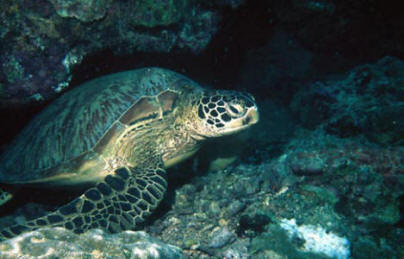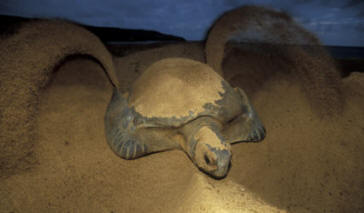◦Home
![]() Habitat
Habitat![]()
Chelonia mydas
Green sea turtles occupy three types of
habitats: high-energy beaches, convergence zones in the pelagic habitat, and
benthic feeding grounds in shallow waters. Hatchings first live on the beach,
then move into convergence zones in the open ocean. Once they are mature enough,
they leave for the pelagic habitat and then the benthic feeding grounds. Green
Sea turtles are found near coral reefs, worm reefs, and even the rocky bottom.
Because of their omnivorous diet, green sea turtles
forage in shallow seas where there is sufficient light
to ensure an abundant amount of marine grasses.
When they are ready to sleep, they retire to a location
that provides safety from large predators such as
sharks. On coral reefs, they move under overhanging
ledges and face inwards.
Green sea turtles live in warm tropical waters all over
the world. They are in greatest association near the United States around the
Gulf of Mexico area and along the East Coast, particularly Florida. The Florida
nesting population is threatened. While both nationally and internationally the
green sea turtle is endangered. This turtle is primarily endangered because of
water pollution, destruction of habitat, and because it is hunted.
When females are ready, they drop their egg clutches on high-energy
beaches. A deep next cavity is dug above the high-water line.
Photo by: Kevin Schafer
Created by:
Melissa
Martinelli
Last Updated: April 27th, 2007


